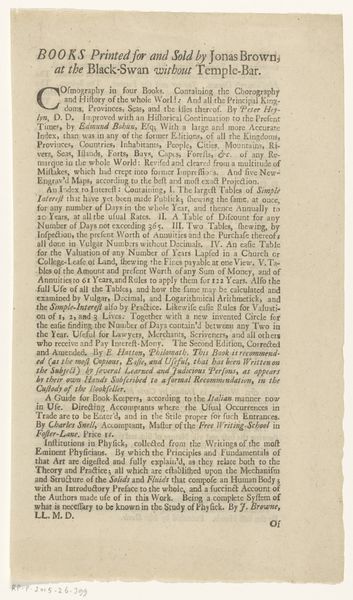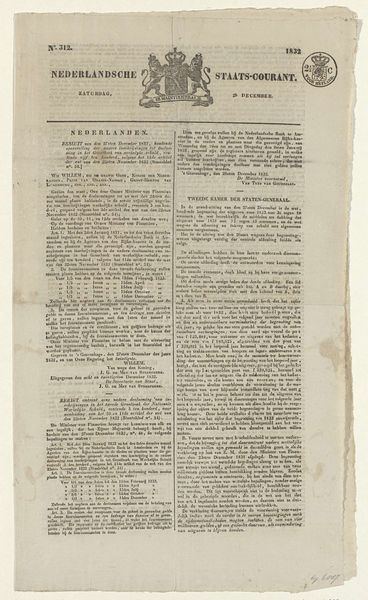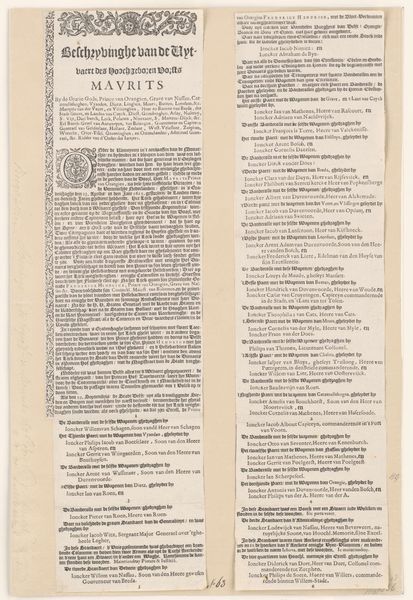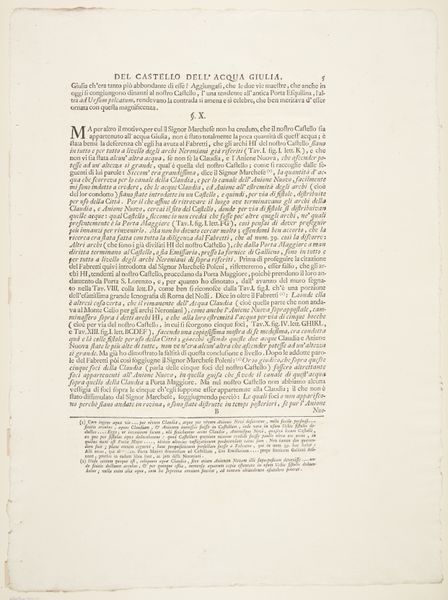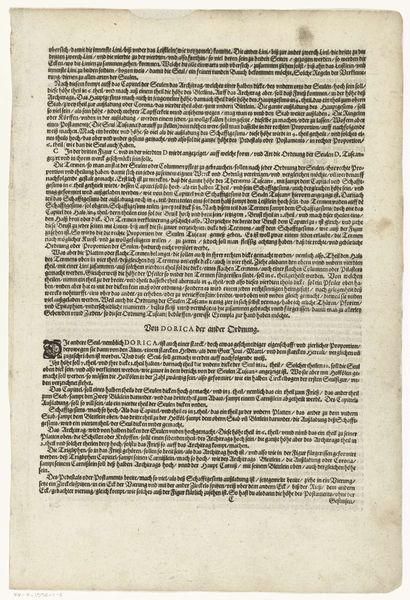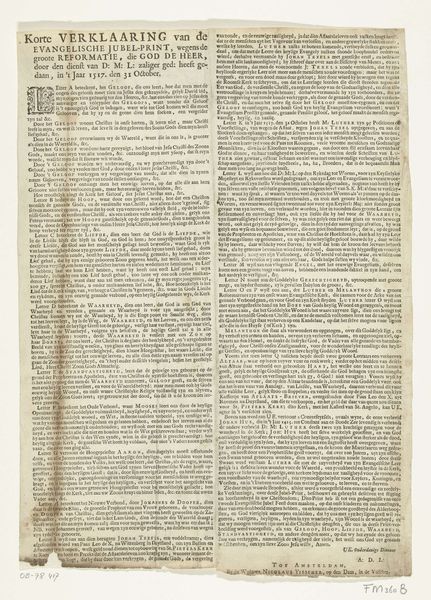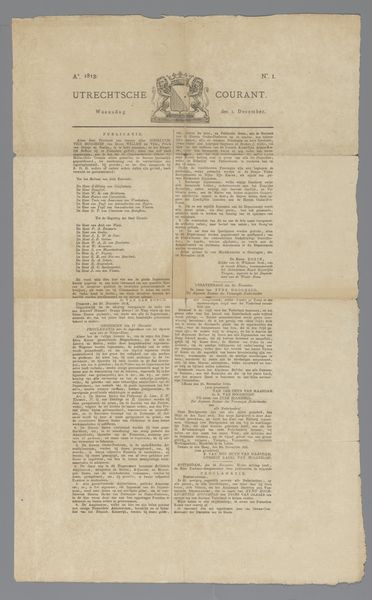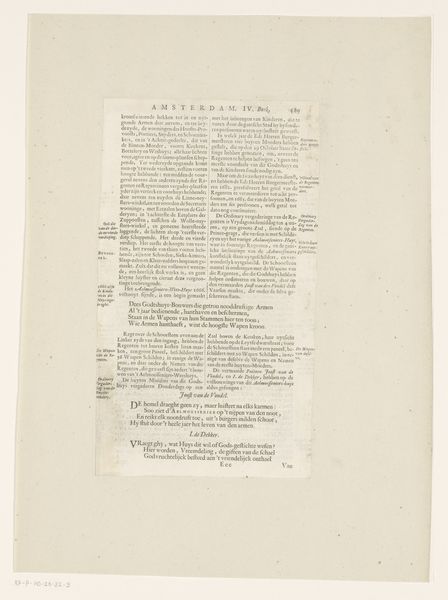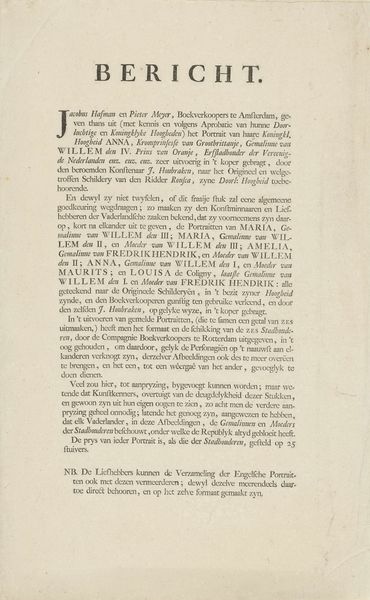
print, textile, paper
# print
#
textile
#
paper
Copyright: Rijks Museum: Open Domain
Curator: Let’s turn our attention now to “Memorie aan de Schepenen van Amsterdam,” created in 1896 by Matthias Wulfraet. The work before us combines print and textile on paper, making it quite unique in its materiality. What are your immediate thoughts as you take it in? Editor: My first impression is its commanding presence; it fills the frame completely and exudes an atmosphere of old world craftsmanship. The layout, even the distressed paper edges, really drives home that this object has withstood the test of time, it is, in essence, an affidavit concerning paintings being offered under false pretenses. Curator: That's an intriguing take. Formally, I'm drawn to how Wulfraet merges various textual arrangements on one surface. You see these columns of closely-set type and contrasting display text, almost like visual arguments unfolding on the page. It reminds me of early broadsides that conveyed information directly but lacked aesthetic balance. Editor: Precisely. And it's also important to look at the socio-economic framework of the time; these documents were circulated amongst city magistrates in Amsterdam. How materials—in this case printed ephemera combined with what might have been scraps of fabric used as seals or markers—gained value through their role in arbitrating legal disputes in Amsterdam's marketplace. Curator: This prompts the viewer to contemplate the production of images and the commercial life of artworks as trade commodities, not just as expressions of individual artistry. The text speaks volumes, too. Editor: Indeed, even if we could easily understand 17th century Dutch here; what stands out is not pure information but the layers of context within which artists labored and the role printmaking held during the advent of mass culture. Curator: In short, the work prompts one to look beyond surface aesthetics toward the dense interplay of visual structure, labor, commerce, and perhaps the roots of consumer culture. Editor: Yes, ultimately its meaning resides as much in how its multiple elements were brought into play historically, turning the simple combination of paper, print, and textile into an incisive mirror reflecting complex commercial circumstances.
Comments
No comments
Be the first to comment and join the conversation on the ultimate creative platform.


